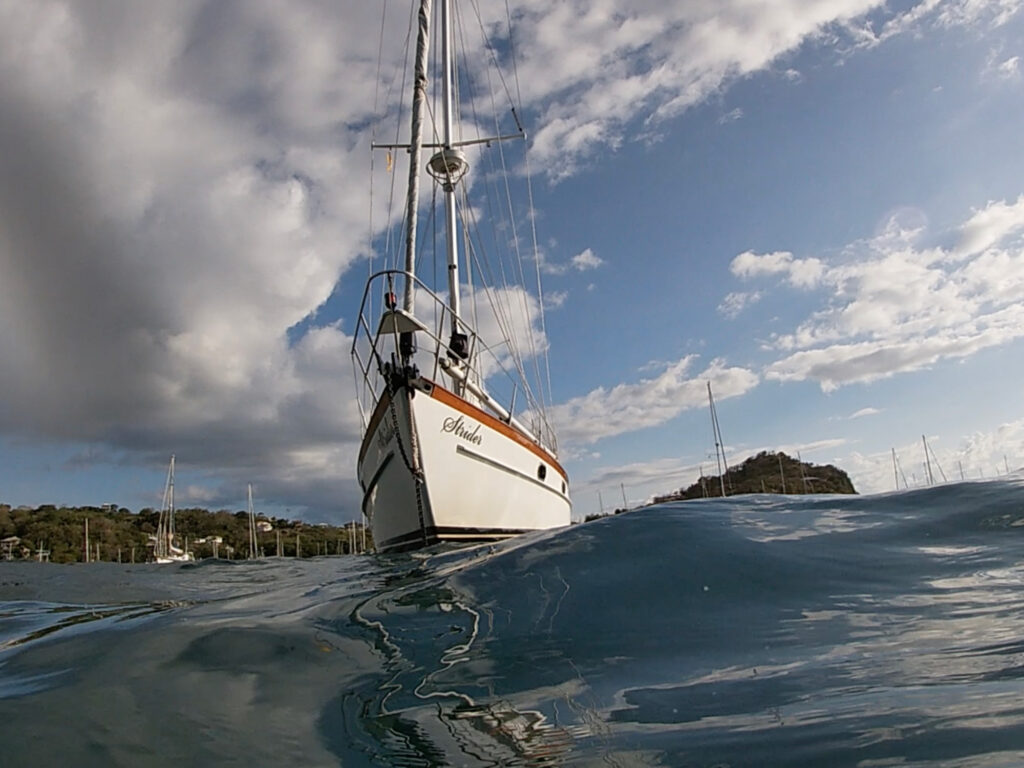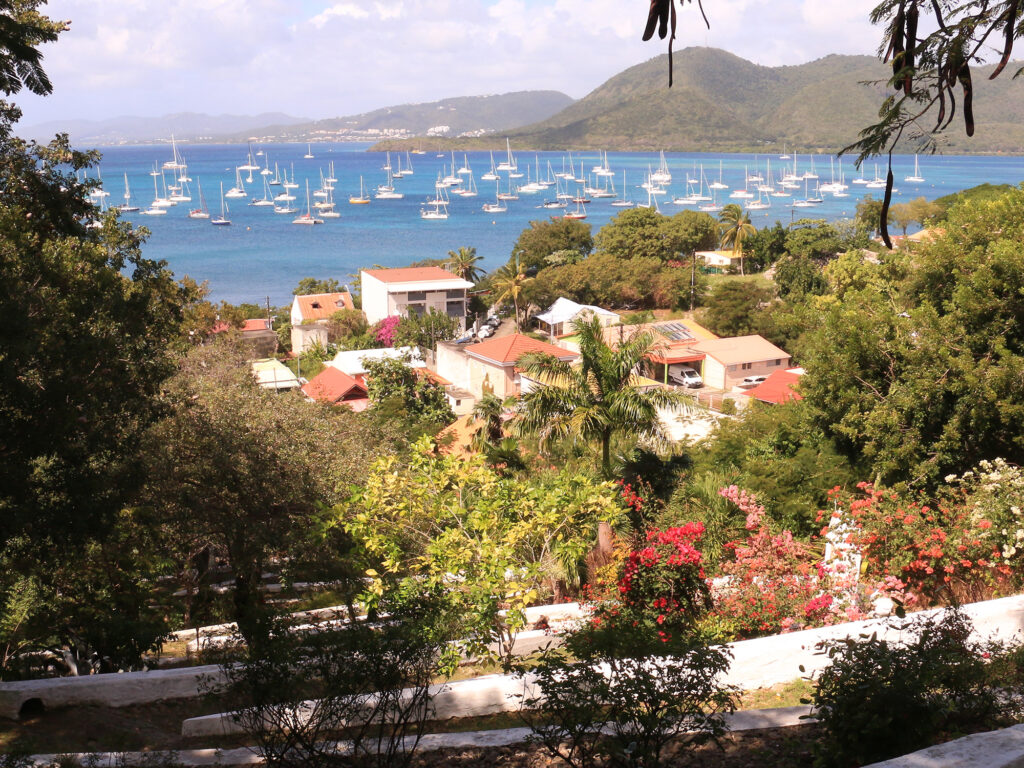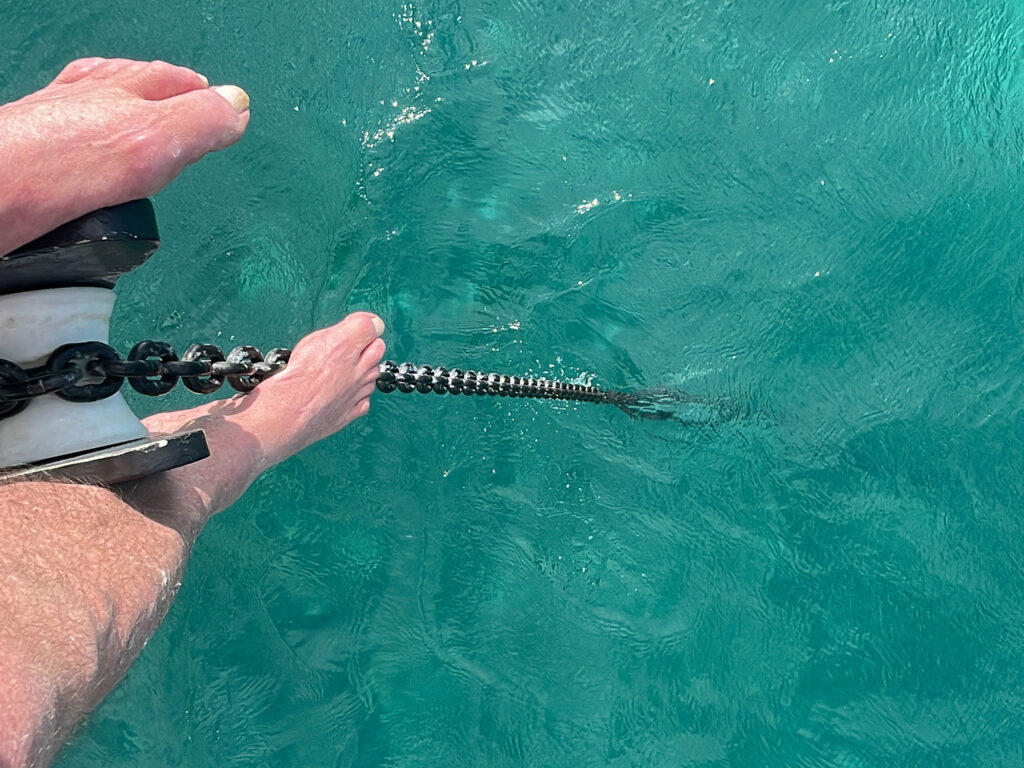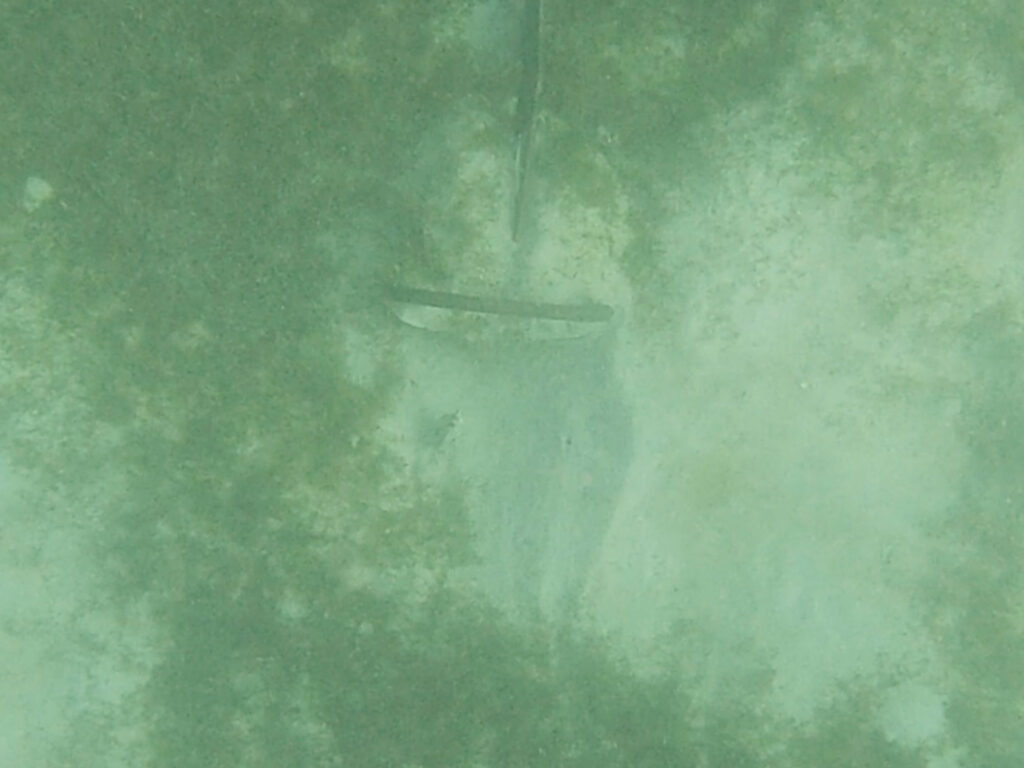
In many ways, anchoring is more about technique than gear. I was reminded of this fact at the end of a two-week delivery from Antigua to Martinique in the Eastern Caribbean. As we rounded the final headland on Martinique and turned east, Diamond Rock was just off the starboard bow. A few miles ahead was a line of white sailboats so thick that we couldn’t see the beach.
“That’s Sainte-Anne,” I told my family, who had joined me as crew for this Christmas delivery. “That’s the end of the line for this voyage.”

This small, charming beach village is home to one of the nicest open roadsteads in the islands. More than 200 boats were anchored here. I know because I counted them.
The bottom rose gradually to 30, then 15 feet, as we nosed in amid the moored fleet. We were surrounded. My daughter, Ren, was a senior at Maine Maritime Academy at the time, and she was at the helm, watching the depth finder as acting captain on our 54-foot charter boat. I was downgraded to deckhand and relegated to anchor duty at the bow.
I watched the bottom, which was a checkerboard of dark and light areas, some sand and some hard, bare coral. I picked out a patch of sand, motioned for Ren to stop, and lowered the hefty CQR anchor.
She backed down, and the chains rattled out. When the 10-fathom mark on the chain slipped over the bow roller, I give Ren the signal and snubbed the chain.
“What’s the depth?” I hollered. It looked like 20 feet.
“Eighteen,” she replied.
Perfect.

I watched the chain raise up and straighten, and then drop. I leaned over the bow pulpit and, with my foot on the chain, felt the chain vibrate, dragging along the bottom. It straightened out again. I felt the anchor dig in, then break free, bouncing over the hard bottom.
We tried another spot. Then another. On the third attempt, I again felt the chain vibrate as it straightened out on the bottom. The anchor dragged, and the chain rose up in a straight line. The boat stopped.
“The anchor is set,” I hollered. “Give the boat another nudge in reverse, just to make sure.”
I let out another 10 fathoms, rigged the snubber, and walked aft to confer with the skipper.
“Do you trust this spot?” I asked Ren. She looked puzzled.
“I don’t,” I said.
“Then what do we do?” she asked.
“You are the captain,” I said.
“We dive on the anchor?” she replied, as more of a question than a statement.

Both of us swam out along the chain in masks, snorkels and fins. We followed the chain as it swept to the seabed, then paid along the bottom. When we saw the anchor, we dove down to find the plowshares of the CQR buried in sand. All that was visible was the shank and the chain. A 10-foot furrow in the bottom showed where the anchor had dragged before righting itself and digging in.
Once we were back on board, I asked her, “Now, how do you feel?”
“I think we’ll stay put,” she replied. I agreed. There was nearly 60 feet of chain on the bottom, then another 60 feet rising up in a gentle catenary to the surface.
Our visual inspection was one of the best anchoring techniques I know. Placing a foot on the chain can also tell you a lot about what’s happening on the bottom at the other end of the chain. Not so much on the nylon rode, but the foot can still feel the anchor bounce, drag and set—or not.








